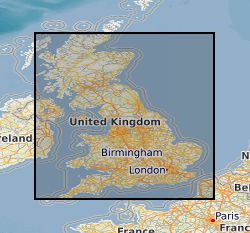Subsidence
Type of resources
Topics
Keywords
Contact for the resource
Provided by
Years
Formats
Representation types
Update frequencies
Scale
-

**No longer exists - now part of GeoSure**An assessment of the potential for a geological deposit to shrink or swell with changes in moisture content. A characteristic usually of clays, mudstones and shales. The methodology is based on BGS digital stratigraphic linework, geotechnical properties and expert knowledge of the behaviour of the formations so defined.
-

The Collapsible Ground dataset provides an assessment of the potential for a geological deposit to collapse (to subside rapidly) as a consequence of a metastable microfabric in loessic material. Such metastable material is prone to collapse when it is loaded (as by construction of a building, for example) and then saturated by water (as by rising groundwater, for example). Collapse may cause damage to overlying property. The methodology is based on 'BGS Geology' (Digital Map) and expert knowledge of the origin and behaviour of the formations so defined. It provides complete coverage of Great Britain, subject to revision in line with changes in DiGMapGB lithology codes and methodological improvements. The storage formats of the data are ESRI Shapefiles and MapInfo but other formats can be supplied. The GeoSure datasets and related reports from the British Geological Survey provide information about potential ground movement due to six types of natural geological hazard, in a helpful and user-friendly format. The reports can help inform planning decisions and indicate causes of subsidence.
-

This dataset provides an assessment of the potential for dissolution within a geological deposit. Ground dissolution occurs when certain types of rock contain layers of material that may dissolve if they get wet. This can cause underground cavities to develop. These cavities reduce support to the ground above and can lead to a collapse of overlying rocks. Dissolution of soluble rocks produces landforms and features collectively known as 'karst'. Britain has four main types of soluble or 'karstic' rocks; limestone, chalk, gypsum and salt, each with a different character and associated potential hazards. Engineering problems associated with these karstic rocks include subsidence, sinkhole formation, uneven rock-head and reduced rock-mass strength. Sinkhole formation and subsidence has the potential to cause damage to buildings and infrastructure. Complete Great Britain national coverage is available. The storage formats of the data are ESRI Shapefiles and MapInfo but other formats can be supplied. The GeoSure data sets and reports from the British Geological Survey provide information about potential ground movement or subsidence in a helpful and user-friendly format. The reports can help inform planning decisions and indicate causes of subsidence. The methodology is based on 'BGS Geology' (Digital Map) and expert knowledge of the behaviour of the formations so defined.
-

Reports detailing investigations into mine water discharges and potential effects on aquifers in the East Midlands Coalfield and in the Lake District.
-

Shrink-swell is recognised as the most significant geohazard across Great Britain. This dataset identifies areas of shrink-swell hazard with increased potential due to changing climatic conditions based on forecasts derived from the UKCP09 research project. The dataset has been created at two levels of detail for different climatic scenarios and dates up to 2080. The Basic dataset is an overview at 2Km grid resolution whilst the more detailed Premium dataset is generated at a 50m resolution. The Open versions are simplified versions of the premium versions and are shared via GeoIndex. The premium versions are paid for products. UKCP09 - UK Climate Projections 2009 project
-

Shrink-swell is recognised as the most significant geohazard across Great Britain. This dataset identifies areas of shrink-swell hazard with increased potential due to changing climatic conditions based on forecasts derived from the UKCP09 research project. The dataset has been created at two levels of detail for different climatic scenarios and dates up to 2080. The Basic dataset is an overview at 2Km grid resolution whilst the more detailed Premium dataset is generated at a 50m resolution. The Open versions are simplified versions of the premium versions and are shared via GeoIndex. The premium versions are paid for products. UKCP09 - UK Climate Projections 2009 project
-

**NO LONGER EXISTS**Data detailing the distribution and severity of dissolution (karst) features throughout the UK. The data is stored locally as ArcView shape files with associated database information detailing the severity of the karst geohazards ranked from 1-5. The dataset is under construction, but will eventually cover the karst geohazards related to Limestone, Chalk, Gypsum and Salt. Consistent data, but some variability depening on the age of the source digital maps.
-

The current database was developed to record Karst Geohazard information acquired as part of its onshore core and commissioned mapping programmes. Information held on the database includes details on stream sinks, sinkholes, natural cavities and associated building damage. The database is being compiled when staff and project funds are available to do the work. The dataset is currently updated on an irregular basis as new karst geohazard information is received from field surveys. Karst geohazard details observed and measured in the field are recorded on a standard proforma or digitally using the BGS•SIGMAmobile tablet computers or in the office via a GSD (Geological Spatial Database) to ensure consistency of information and to allow easy entry into the database. The database currently holds details of karst geohazards in: The limestone areas of the Mendip Hills, Bath, Bristol, Monmouth, Plymouth, Derbyshire Dome,and South Wales (North Crop), North Pennines (Malham to Hawes and Weardale: Rookhope to Cornriggs). The chalk of Southern England (especially in Dorset, and the Salisbury, Winchester, Andover, Basingstoke, Dorchester, Hungerford and Alresford, Worthing, South London (Leatherhead-Croydon-Bromley), Newbury, Maidenhead, Hemel Hempstead, St Albans, Hatfield. Jurassic limestone areas from Grantham to Stamford. Gypsum areas in Yorkshire, Cumbria and Darlington. Salt areas in Cheshire and Stafford (natural and brine extraction-induced sinkholes). The database is eventually intended to hold information on karst geohazards throughout Great Britain and about half of the country is now included.
 NERC Data Catalogue Service
NERC Data Catalogue Service